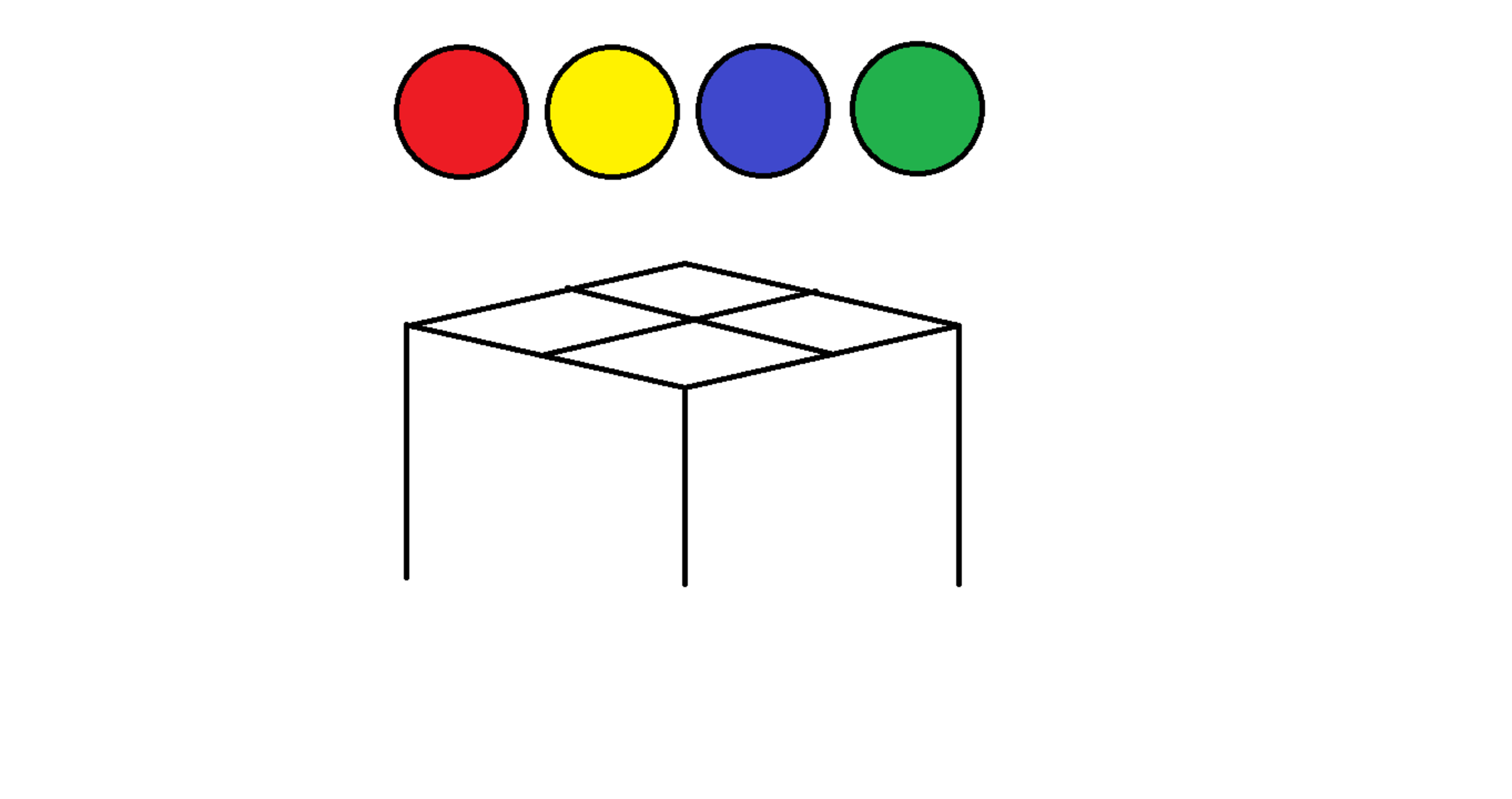4 Balls 4 Cells

Consider the set S of partitions of four differently colored balls into as many as four groups.
What is the probability that in a partition chosen randomly from S , the yellow ball is grouped alone?
This section requires Javascript.
You are seeing this because something didn't load right. We suggest you, (a) try
refreshing the page, (b) enabling javascript if it is disabled on your browser and,
finally, (c)
loading the
non-javascript version of this page
. We're sorry about the hassle.
1 solution
Nice problem and solution. At first, looking at the diagram, I was a bit confused because the partitions shown had different orientations to one another, (side-by-side or diagonally across from one another), which didn't seen consistent with them being "identical". So for my first attempt, for the purposes of counting, I considered the boxes distinct and then divided by 4 to account for rotational symmetry. This gave an adjusted sample space of 6 4 outcomes in general, 2 7 of which involved the yellow ball being alone. But as 6 4 2 7 wasn't one of the answer options I decided to just ignore the diagram and just focus on the text, after which I found that in a sample space of 1 5 partitions, 5 involved the yellow ball being alone.
Log in to reply
Thank you and sorry for my bad graphics.
I also "ignored the diagram and just focus on the text."
On the other hand, I also have the same qualms as Jon Haussmann has in the report section, do you think there's a way to improve this question?
Log in to reply
Jon does have a valid point, and I've made a suggested revision in a comment to his report. I'll be interested to hear what you think.
Log in to reply
@Brian Charlesworth – Will this edition make any difference?
Dont get this at all. IF the yellow is alone in one bin THEN there are three other choices for the others...each with 3/4 probability or 27/64 that all three other balls avoid the container that yellow is in
Log in to reply
That works in case of 4 different spaces, but here they are considered identical.
If we designate R , B , G , Y as distinct elements for red, blue, green, & yellow respectively. If we desire a distinct set of yellow only, we will need to find out the partition sets of the other 3 elements, and there are 5 ways to arrange them:
{{R, B, G}}, {{R}, {B,G}}, {{B}, {R,G}}, {{G}, {B,R}}, {{R}, {B}, {G}}
From these 5 arrangements, the yellow ball can be placed separately from the 3 balls.
This partition number is also called Bell Number , and we can write the notation as:
B 3 = 5 .
By adding Y to join any of the 1 0 sets above, we will obtain 1 0 more arrangements and can calculate all possible outcomes for 4 elements: B 4 = 1 5
Therefore, the probability of only one yellow in one of the compartments = B 4 B 3 = 1 5 5 = 3 1 .